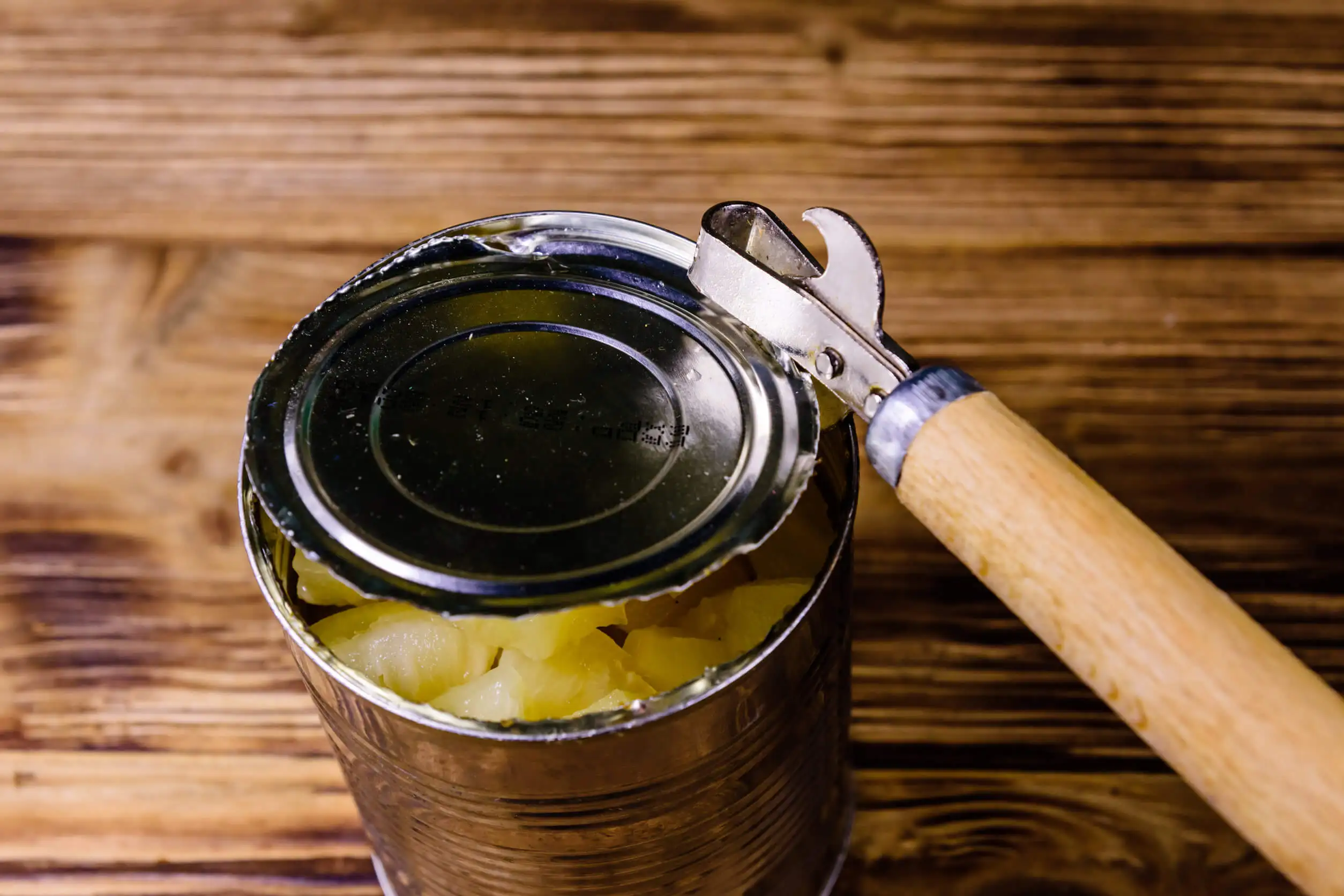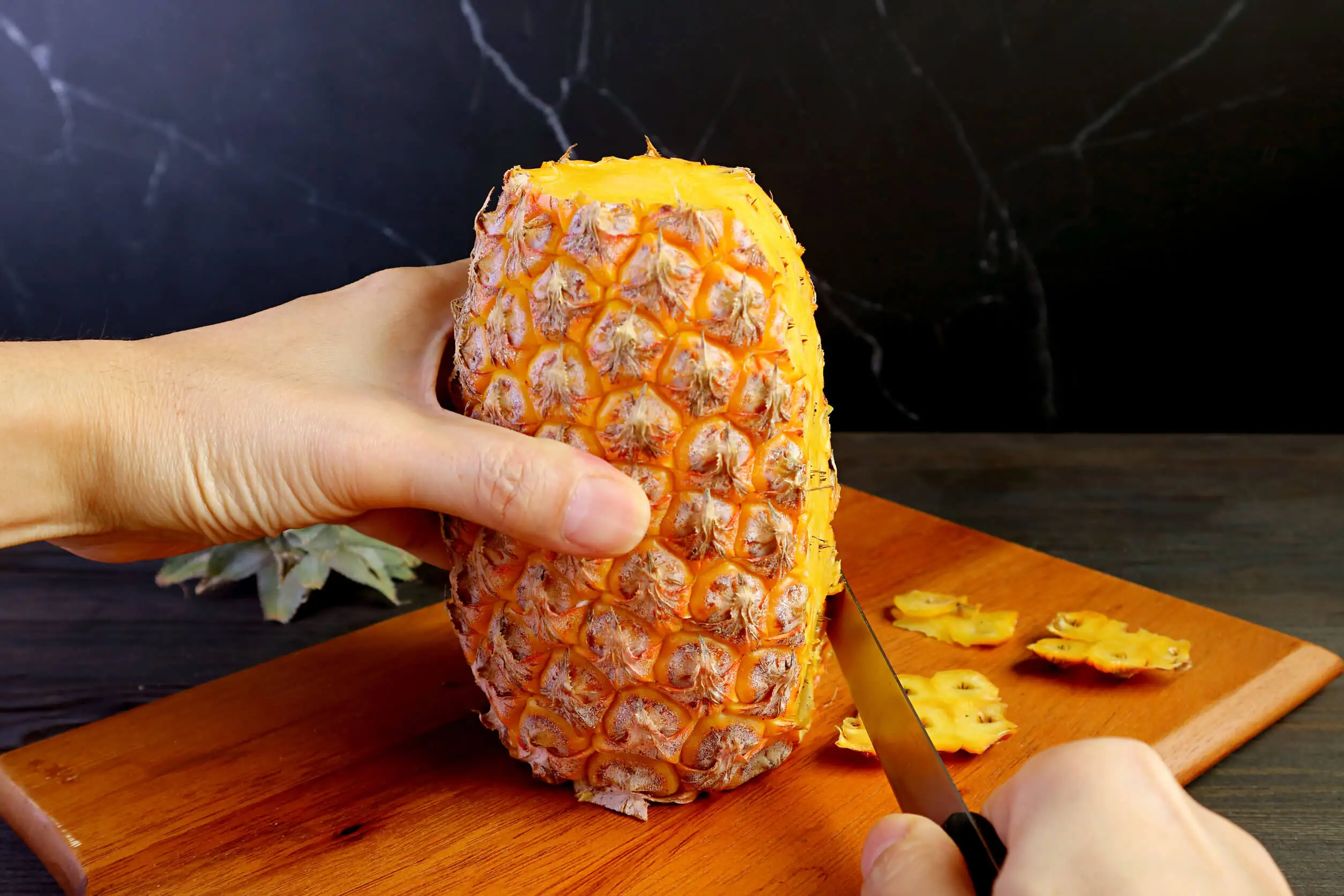Pineapple Carpaccio with Ice Cream: A Delicious Recipe


Written and verified by the nutritionist Saúl Sánchez Arias
Pineapple carpaccio with ice cream is a simple dessert to prepare and has an interesting nutritional profile. This fruit contains a series of enzymes that facilitate the digestion of food. Also, it’s one of the most consumed exotic fruits in Western countries and can be found both fresh and canned.
Before starting, it should be noted that fruits should be an important part of your regular diet. They have phytochemicals inside them that develop an antioxidant effect, which could help prevent the development of complex diseases. Plus, they’re also able to provide a significant dose of vitamins, especially of the water-soluble type.
Let’s take a closer look at this delicious recipe!
Ingredients for pineapple carpaccio with ice cream
If you want to prepare an exquisite pineapple carpaccio with ice cream, you’ll need the following ingredients:
- 1/4 natural pineapple
- 1/2 liter vanilla ice cream
- Four spoonfuls of sugar
- 25 grams of chopped hazelnuts
- Mint leaves
Please note that it’s possible to vary the ice cream flavor to achieve different results. We recommend vanilla ice cream, but preparing the dessert with pistachio or hazelnut ice cream is also possible. However, the ice cream chosen should be of good quality. It’s best if it’s prepared with organic milk and good simple sugar content.

Many industrial ice creams concentrate too many simple carbohydrates inside to mask the defects of the milk used for its preparation as it is not of the highest quality. Similarly, it’s is not advisable to have too much fat in the cream, either. It’s always a good idea to find a balanced profile that allows you to notice the flavor of the dried fruit or vanilla flavors.
You’ll definitely like this article: 8 Healthy Foods that are Trending in 2021
Step by step instructions for pineapple carpaccio
- First, peel the pineapple and cut it into very thin slices. This is one of the keys to the recipe: the thinner the pineapple slices, the better the final result.
- Place the sugar in a colander and sprinkle evenly over the top. The whole pineapple needs to be covered with sugar.
- The next step is tricky: You’ll need a kitchen blowtorch to caramelize the sugar that has just been added to get a crunchy surface layer.
- Once this is done, sprinkle with the chopped hazelnuts and mint.
- Finally, add a generous scoop of ice cream in the middle of the dish and eat before it melts!
Contraindications of this recipe
It’s important to mention that this recipe may not be suitable for some people. For example, it’s not healthy for those who have developed some type of metabolic disorder, such as Type 2 diabetes.
In this case, the consumption of simple sugars could significantly impact the pancreas and cause stress on this organ. It’s much more appropriate to moderate the intake of carbohydrates, according to a study published in Nutrients.

We know you’ll like to read: The Benefits and Importance of Choosing Seasonal Foods
On the other hand, people who are overweight or obese should also be cautious when including this kind of preparation in their diets. There’s usually insulin resistance when body fat levels exceed a certain limit, which causes carbohydrates not to be properly metabolized and used by the body.
However, all this doesn’t mean that this dessert can’t be included in the context of a healthy diet. People without metabolic diseases can enjoy pineapple carpaccio without regrets!
Of course, this dessert should always be included within the framework of a balanced and varied diet. It’s crucial to promote the practice of regular physical exercise to stimulate the utilization of sugars consumed.
The benefits of pineapple
Before dismissing the recipe, it’s also a good video to discover the main health benefits of pineapple. It’s a fruit that has many elements capable of improving the body’s functioning.
Pineapple improves intestinal transit
Pineapple is a source of fiber. This substance has proven to be key to improving intestinal transit and avoiding constipation.
In addition, the enzymes in pineapple will contribute to better digestion of food, which will allow an easier passage of the bolus along the intestine.
It can help prevent aging
Moreover, pineapple contains phytochemicals. Most of these substances have high antioxidant power. Therefore, they help neutralize free radicals’ formation and their subsequent accumulation in the body’s tissues.
Thus, this tasty fruit can prevent aging and a large number of complex diseases linked to it, as evidenced by research published in Clinical Interventions in Aging.
Pineapples can help reduce joint pain
Many of the enzymes in pineapple and phytochemicals generate an anti-inflammatory effect in the body. This is beneficial when it comes to alleviating problems and pain at the joint or muscle level.
Adding this fruit to your diet and the consumption of certain culinary spices such as turmeric could be of great help in the adjuvant treatment of certain types of chronic pain linked to the musculoskeletal system.
Prepares pineapple carpaccio with ice cream
As you’ve seen, it’s really simple to prepare a delicious pineapple carpaccio with ice cream. The only step that involves a little more difficult is the blowtorch, especially because many people don’t have this element at home. However, you can buy it in almost any commercial area. It has many different applications in the context of baking and cooking.
However, keep in mind that to achieve an optimal state of health, it’s also necessary to combine a proper diet with other good habits. Among them, the practice of regular physical activity stands out, as well as enough quality sleep. Likewise, it’s necessary to sleep at least 7 hours every night so that your body’s recovery processes are carried out satisfactorily.
All cited sources were thoroughly reviewed by our team to ensure their quality, reliability, currency, and validity. The bibliography of this article was considered reliable and of academic or scientific accuracy.
- Bolla, A. M., Caretto, A., Laurenzi, A., Scavini, M., & Piemonti, L. (2019). Low-Carb and Ketogenic Diets in Type 1 and Type 2 Diabetes. Nutrients, 11(5), 962. https://doi.org/10.3390/nu11050962
- Vriesman, M. H., Koppen, I., Camilleri, M., Di Lorenzo, C., & Benninga, M. A. (2020). Management of functional constipation in children and adults. Nature reviews. Gastroenterology & hepatology, 17(1), 21–39. https://doi.org/10.1038/s41575-019-0222-y
- Liguori, I., Russo, G., Curcio, F., Bulli, G., Aran, L., Della-Morte, D., Gargiulo, G., Testa, G., Cacciatore, F., Bonaduce, D., & Abete, P. (2018). Oxidative stress, aging, and diseases. Clinical interventions in aging, 13, 757–772. https://doi.org/10.2147/CIA.S158513
This text is provided for informational purposes only and does not replace consultation with a professional. If in doubt, consult your specialist.








